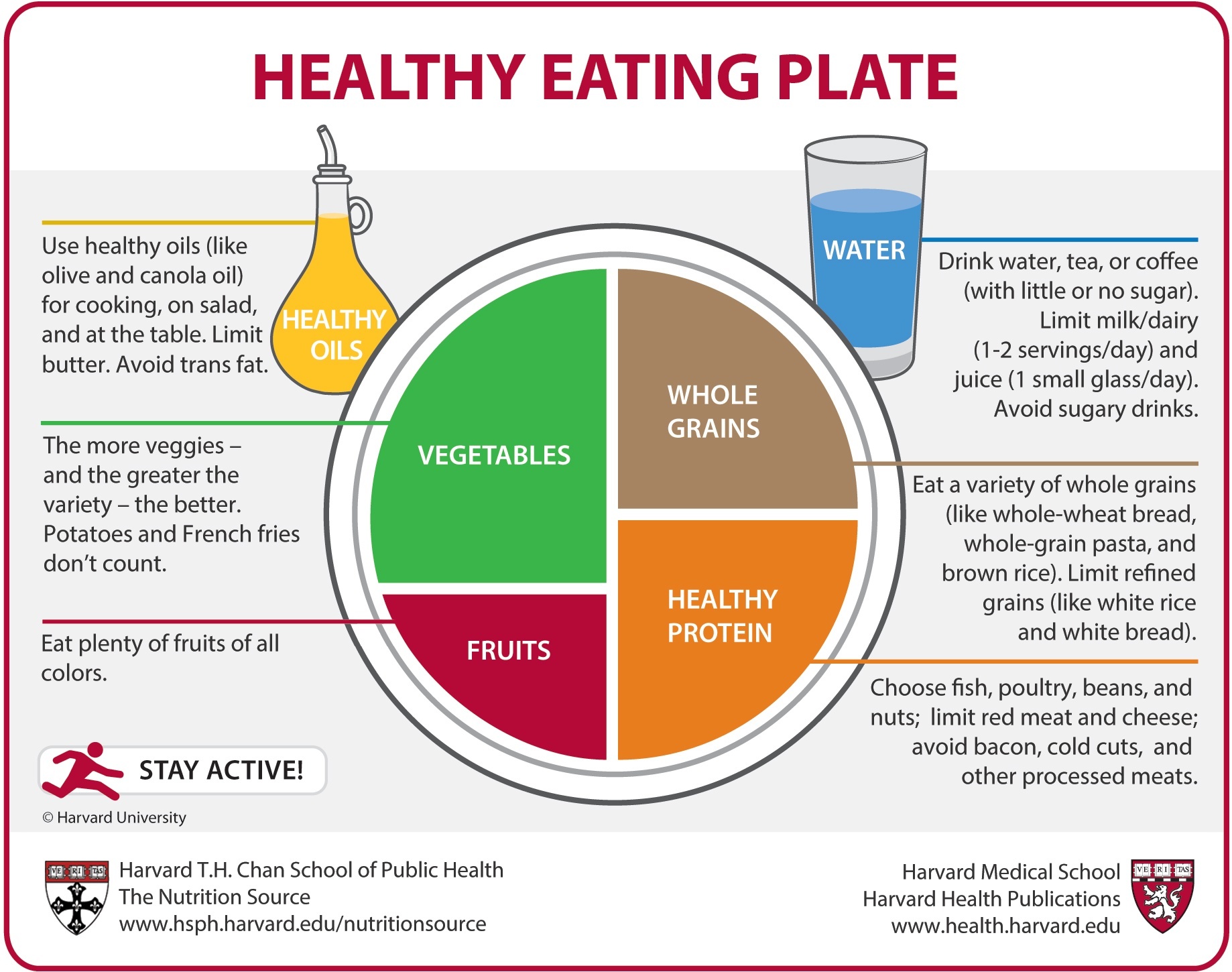Portion control continues to be a big contributor to the growing obesity rate. Restaurants over portion meals, dinner plates have gotten bigger, and meals have become supersized and prepackaged making them readily available within minutes in the microwave. How do we know how much we should be eating and what should our meals be comprised of?
Food guides developed by the U.S. Department of Agriculture (USDA) and U.S. Department of Health and Human Services (HHS), such as My Pyramid and MyPlate, have become excellent resources for individual consumers, health professionals, and nutrition educators. These visuals provide excellent guidance for the five major food groups, which are building blocks to a healthy diet. They also illustrate how much of certain foods we should be eating in order to maintain a nutritionally balanced lifestyle and stay healthy. As these illustrations have developed over the years we’ve been particularly impressed with Harvard’s version of the USDA’s MyPlate (Harvard’s Healthy Eating Plate) created by experts at the Harvard School of Public Health and Harvard Medical School…and here’s why.

It’s A Plate – With Examples
Like MyPlate, Harvard’s illustration is something we’re all familiar with, a plate! The different food groups are color coded into portions within a standard sized plate so we understand how much of each food group to put on our plate. The visual indicates that half of your plate should be comprised of fruits and vegetables with the other half being lean protein and whole grains. What we like about Harvard’s Healthy Eating Plate is that it takes this one step further and has brief descriptions associated with each food group. We need more information when it comes to what to eat besides shapes and colors. Harvard’s Healthy Eating Plate not only shows the visual of what your plate should be comprised of, but it also gives you examples of each food group so you know what to put on your plate.
Emphasis On Whole Grains
MyPlate advises consumers to make at least half of their grains whole whereas Harvard’s Healthy Eating Plate encourages that almost all of your grains are to be whole grains and also encourages limiting refined grains. Examples are given of what whole and refined grains are to reduce confusion. Making most, if not all, of your grains whole leads to a healthier lifestyle and helps control your weight.
Inclusion Of Healthy Fats
Contrary to popular thinking, fats (the healthy kinds like nuts and avocado) are really good for you, and your body needs them for optimal health. Unfortunately, this is not illustrated on MyPlate; however, it is on their website. Harvard’s Healthy Eating Plate illustrates the inclusion of healthy fats with a bottle of olive oil indicating that one should include a variety of healthy fats in their diet. Examples of healthy fats are also given so consumers know what constitute healthy fats and what to avoid.
Encourages Water
Water is so important for the maintenance of our health, and we like that Harvard’s Healthy Eating Plate includes this in their illustration and encourages us to drink it along with other beverages that are water based with little to no sugar. Within this same category, they emphasize the importance of limiting dairy and avoiding sugary drinks, such as sodas and coffee beverages.
Addition Of Exercise
Movement is such an integral part of our health, which is why we love that it is shown on Harvard’s Healthy Eating Plate. According to the Centers for Disease Control and Prevention, the average adult needs 150 minutes of moderate-intense aerobic activity per week and strength training exercises on two or more days of each week. With the addition of a healthy diet, exercise helps us stay healthy and vibrant, avoid injury, and keep our bones and muscles strong.












